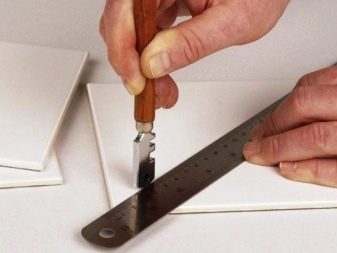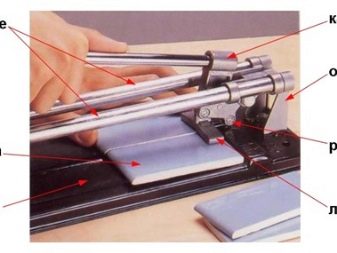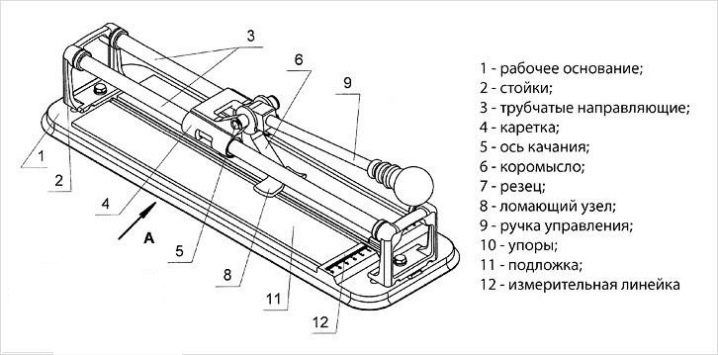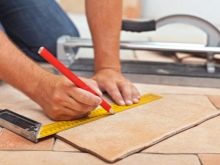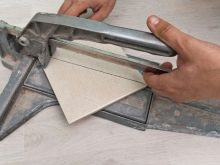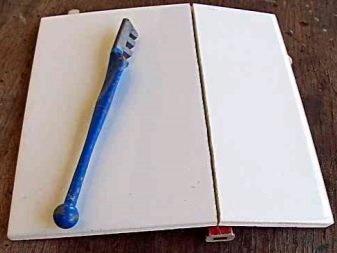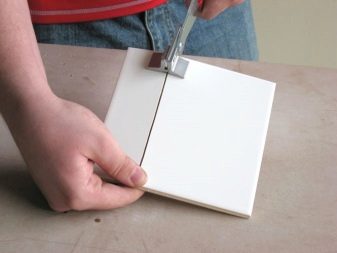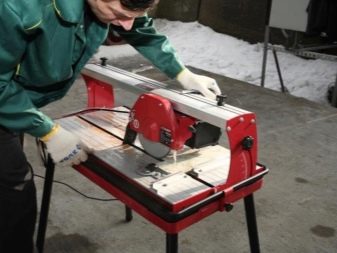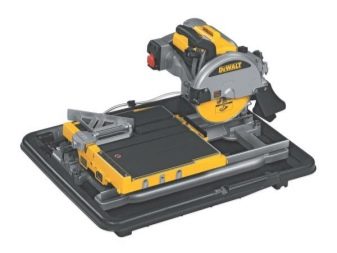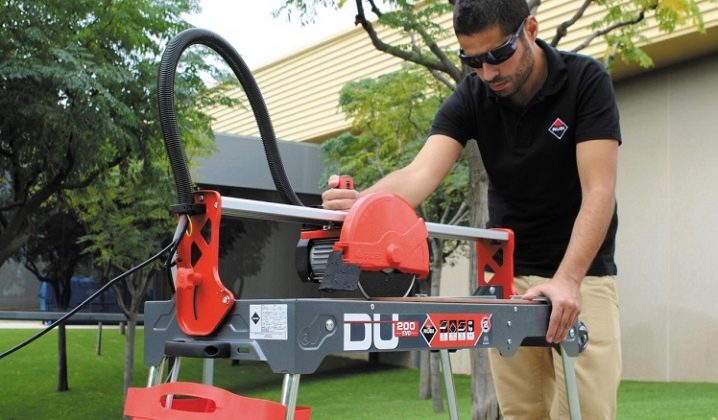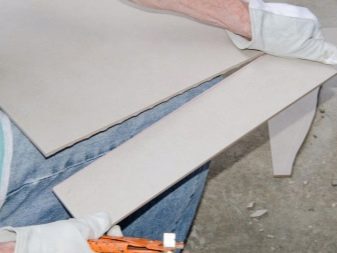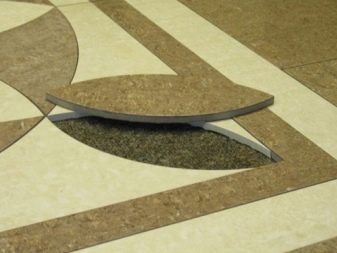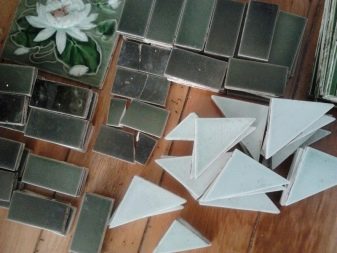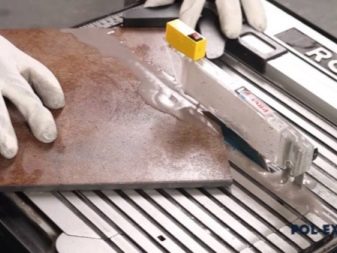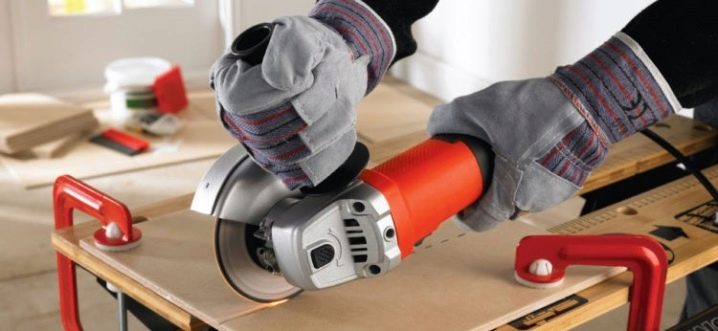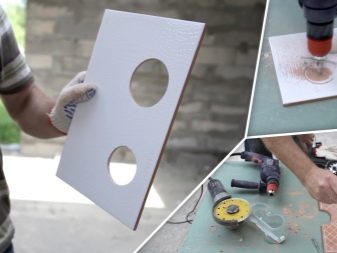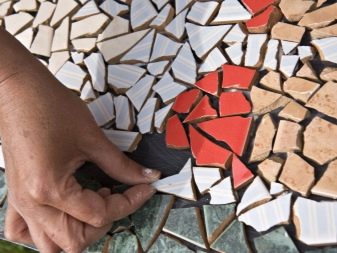How to cut tile tile cutter?

Tile - one of the oldest ways of facing the room. Despite this, it is used to this day, occupying a worthy place along with modern finishing materials. Thanks to its technical characteristics and beautiful appearance, tile has become the market leader in products for facing rooms. Many prefer it.
During the laying of the tile can not do without cutting it, as ceramic tiles often do not fit in their dimensions. Therefore, in many cases they are pruned.And without certain knowledge and special tools this is not so easy to do. If you are not going to lay tiles for professional purposes, then you can save on the purchase of high-tech tools. So, you can purchase a manual tile cutter.
It is mechanical, easy to use and much cheaper than electrical.
Tool list
When working with tiles, you will need the following tools:
- tile cutter;
- marking pen or felt tip pen;
- ruler, preferably made of metal;
- manual tile cutter.
Manual tile cutter
During tile cutting, many use manual tile cutters, as this is one of the most convenient options. It is high quality and inexpensive at the same time.
Manual tile cutter consists of the following components:
- support (it is also the basis);
- guide part of the structure;
- the cutting element consisting of a roller and a disk for cutting;
- lever.
The optimal variant is as follows:
- because of the simplicity of the design, it is easy to use;
- the handle that moves the carriage with the cutting disk acts as a lever;
- thanks to the laws of physics, the force to cut is reduced;
- allows you to make an accurate cut.
-
But this tool also has its disadvantages:
- such a tile cutter can not make a cut at a distance of less than 5 mm from the edge of the tile;
- if you need small pieces, about 5-7 mm, you have to be very careful. It is possible that the tile will break.
Safety
While using the tile cutter, it is important to learn the safety rules inherent in any such tool:
- Before starting work, examine the subject, see if there are any breakages or other damages;
- the carriage must run smoothly and smoothly and without pushing;
- tubular guides should not contain pieces of tile, traces of mortar and other debris. After cleaning, they should be lubricated with engine oil;
- the disk for cutting tiles should be easy to spin around its axis and not contain burrs;
- To avoid injury, it is advisable to use special glasses and protective gloves.
Thread Basics
Before you start cutting the tile, you need to re-check the calculations, and draw a strip on the tile. An incision is made along this lane. It is better to draw a line with a marker, so it will not rub off, and you will follow the direction of movement exactly.
We fix a tile, having accurately fixed it on the tool. There are designs that have clamps with special layers made of rubber. In other cases, you will have to cut a part of the tile (diagonally). The second half must be held by hand. However, this is no big deal. During the cut, you need to measure the pressure exerted by your hand on the handle.
If you apply too much force, the decorative layer can easily deteriorate, and if very little, then you will not be able to break the tile. It is impossible to pass the tool on the tile twice.
For training purposes, you can use previously broken material. Having fixed it, it is necessary to conduct the carriage on itself. So you can easily determine the strength of the required pressure. The cut must be made in one motion, otherwise you may damage the decorative part of the tile.
After making the cut, the tile should be laid on a smooth surface, the cut line should coincide with the edge of the surface. With one hand holding the tile on one side of the cut, on the other - we crush.
If done correctly, the tile should break exactly along the line.Above, it was explained how to work correctly with a manual tile cutter, below we will analyze its electrical version.
Electric tile cutter
Not everyone has such an electrical device, and many are interested in how to use it. The electric tile cutter is similar to a circular saw due to the identical arrangement of the swivel head, engine, support and disk. They are distinguished only by the fact that in a high-quality electric tile cutter there is a dish with water below. Thanks to it during the cutting the disk is cooled and the dust is reduced.
Positive quality of electric tile cutter:
- it allows you to make a perfectly flat cut;
- the minimum number of chips;
- allows you to cut tile at a certain angle;
- almost no dust;
- the possibility of cutting small parts.
Cons are also available:
- such a device is quite expensive;
- There is no way to make a curved cut.
Safety rules
We must not forget about the safe behavior when working with an electrical device.
- work should be done only in special glasses;
- Before you start, you should pay attention to the disk,which should be sharp enough and rotate smoothly;
- if there is an incomprehensible sound or sparks, the equipment should be disconnected from the power supply and taken to a service center;
- check if there is water;
- You can start cutting only after the disc has reached its maximum speed.
Slicing tile
The main feature of the tool is that it is elementarily simple. It is necessary to install so that the disk goes smoothly along the line drawn for the cut. The tile needs to be guided, holding, not forgetting that the first touch should be light enough. Next you should make a little effort while moving the tile.
If you are handing a tile without fixing it, you must make sure that there is no vibration, as chipping can occur.
Important: In order to increase the running time of the disc, water should be periodically replaced during the thread, especially if you have a large number of tiles. While cutting on both sides of the tile, press down with equal force to avoid skewing.
How to cut a tile without tile cutter?
During construction work performed on his own, it may often be necessary to cut the tile yourself at home. However, it is not necessary to use a tile cutter for these purposes.If you do not have large amounts of work, then there is no sense in acquiring an expensive tool. When working with small batches and piece products, you can use the available tools.
Types of cut:
- The incision is made strictly on a flat line. You should also understand where the cut is going. It is considered figured, if the distance between the line and the edge is no more than 2 cm.
- Mosaic elements. Strict forms from geometrical figures belong to a figured cutting. In other cases, you need to crush the tile into small pieces. All products are put into the bag and, using a heavy tool, break to the required dimensions. Non-ceramic tile is an exception.
- Holes round shape with different diameters.
- Figured clippings.
angle grinder
You can use the grinder if there is no tile cutter. This is considered a universal device. It should be noted that for people with small skills using this tool, this method is suitable for straight figured forms, as well as any lines, including curvilinear lines.
In the process, you will need:
- Bulgarian;
- special helmet;
- it is desirable to use a respirator;
- diamond wheel.You can use the cutting circle on the stone;
- mittens and a special suit. It must be closed;
- tool clamping. In some cases, a vice may be needed;
- protective glasses.
Jigsaw
Many people underestimate this tool. However, it can be very useful if there is no tile cutter or grinder. It is worth noting that the saw saw can be used in the same way, but the speed of work will decrease several times.
For the cut you need:
- jigsaw (power doesn't matter);
- It is recommended to use special glasses to protect your eyes;
- a file for carving on a stone.
Figure breaking out
When working with tiles, it may often be necessary to use lines. These lines can be both semicircular and straight. Often there are cases when the cut does not start from the edge of the tile, then you have to make a small hole, then a small part of it is pricked, and it breaks off only after that.
To reduce the number of fragments, it is recommended to apply a deep risk across the entire breakout boundary.
For how tile cutting works, see this video.



